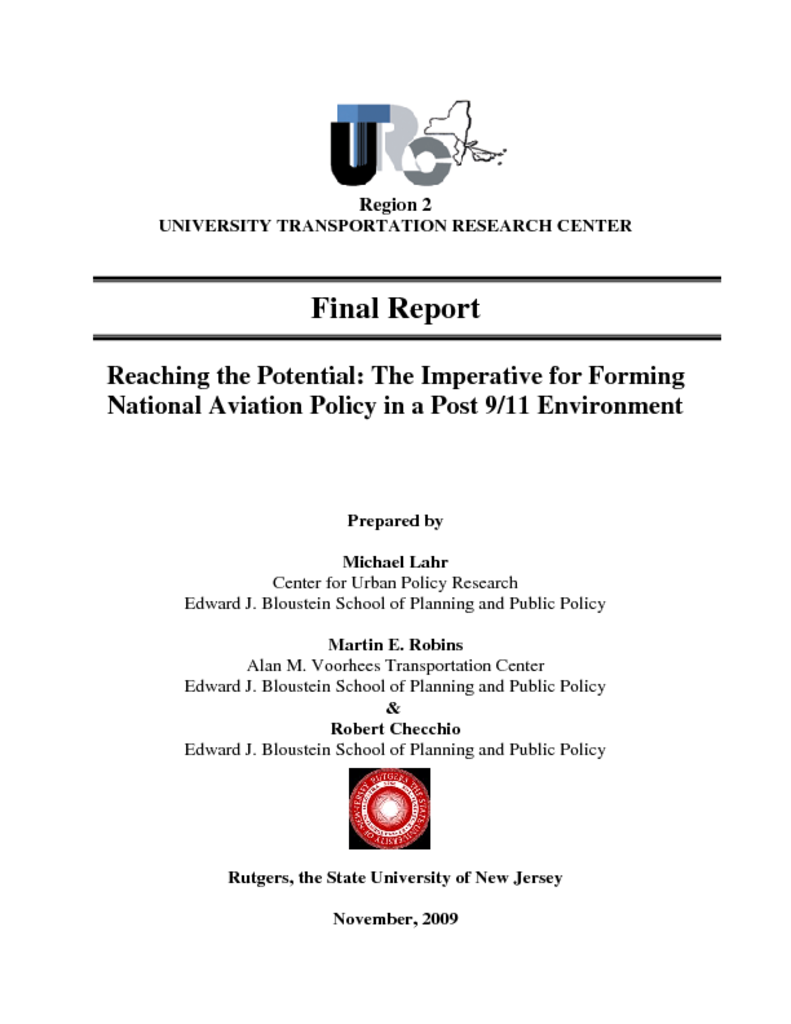<p>The air travel industry is in turmoil. Bankruptcies of commercial air carriers has become commonplace. Increasing fuel costs make profitability wishful thinking for many carriers, and many cities are losing scheduled air service as carriers focus on only the most profitable routes. Complaints about delays are the norm. The benefits that will result from technological improvements are years away. Many in both the private and public sectors describe the system as 'broken' and call out for changes in national aviation policy. Why should we care about the state of the aviation system? By connecting cities with quick and affordable transportation, economies expand from cities to regions to mega regions, creating jobs and improving quality of life, even for people who never board a commercial airliner. Regions with access to airports leads experience greater job growth compared to regions without airports. In a li ttle over a century, air travel grew from a curiosity to the source of over five percent of the U.S. Gross Domestic Product. Few question the need for a robust U.S. air transportation system. With general agreement as to the need for access to air transportation, why is it so difficult to develop federal level policy that would help forward the goals of a safe, effective and efficient air transportation system? Differences in political agendas, perspectives towards government roles and diverse vested interests make policy formation a challenge at best, impossible at worst. Developing solutions to the seemingly intractable problems faced by the aviation industry is so difficult that Department of Transportation Secretary Ray LaHood has recently called for the formation of a Federal Advisory Committee on the Future of Aviation. Policymakers need to address the challenges of developing a national aviation policy before global events relegate the U.S. aviation system to second rate status.</p>




